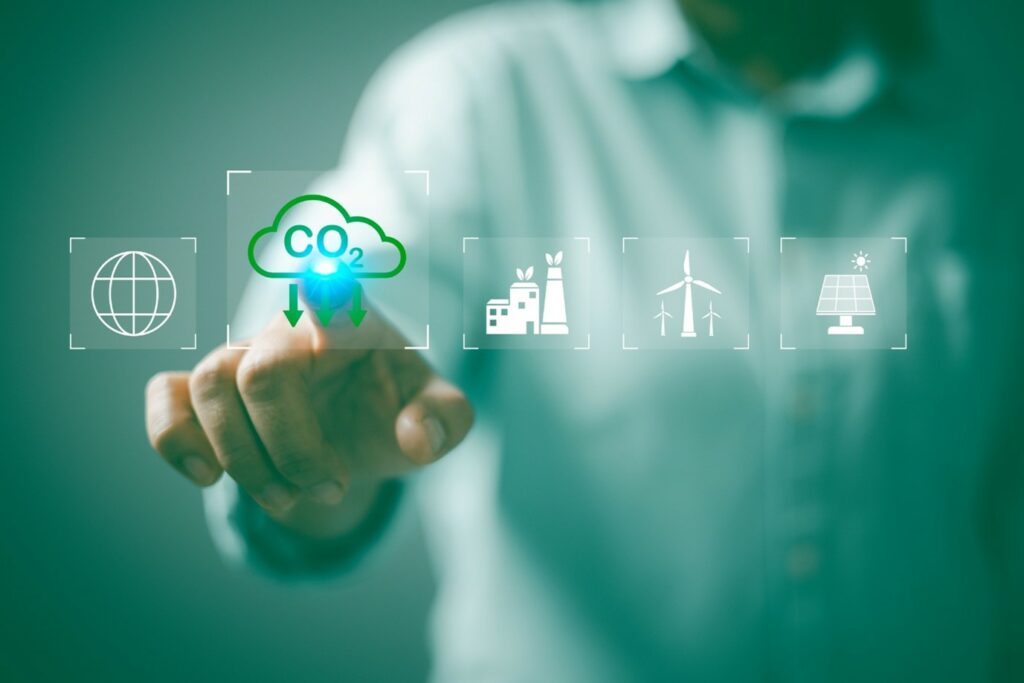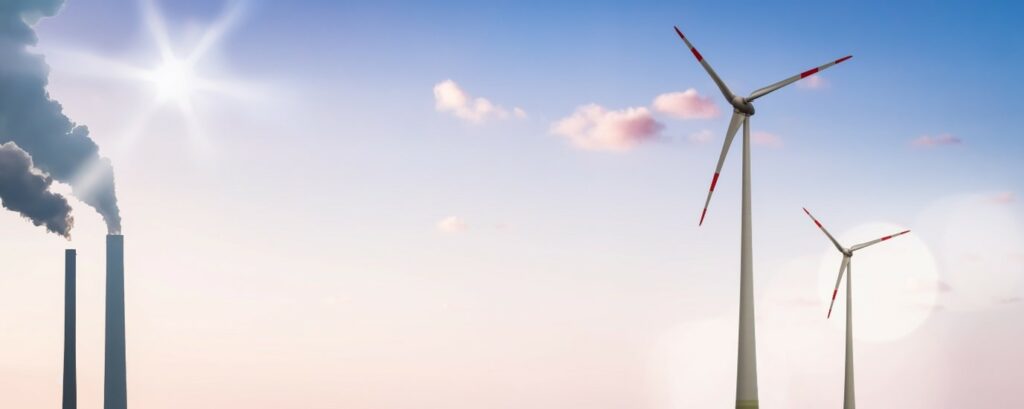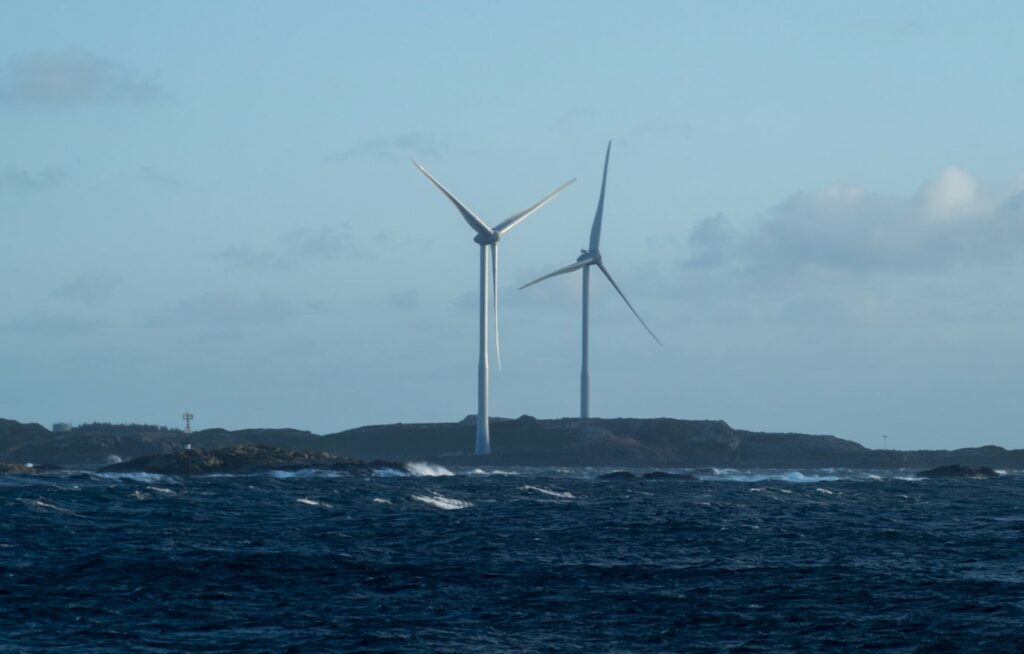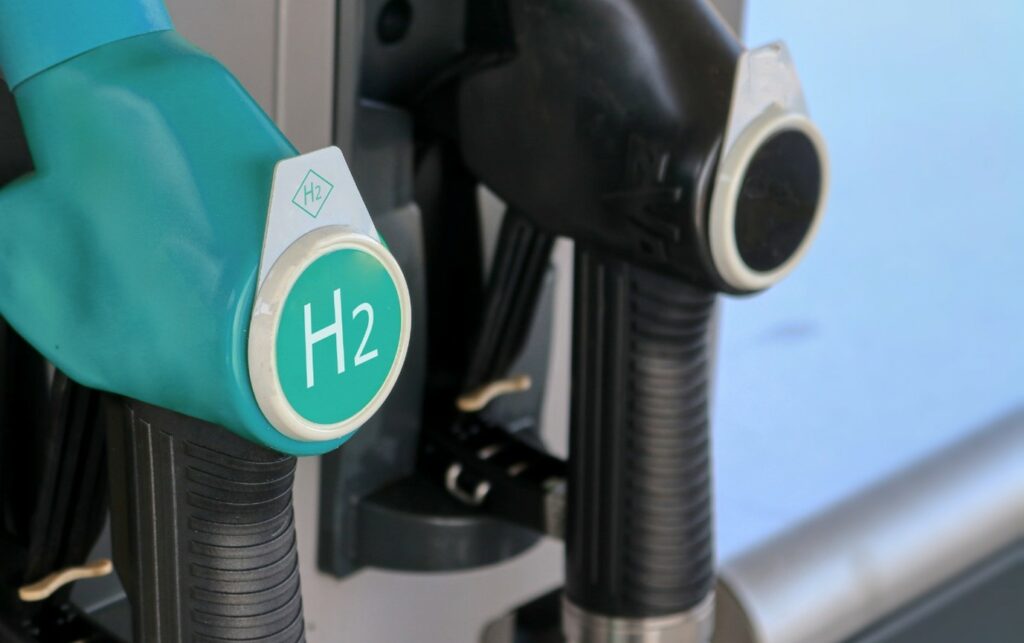February 29, 2024
1. What is Decarbonisation?
Decarbonisation is the deliberate and necessary effort to combat climate change by reducing carbon dioxide emissions. This involves a fundamental shift away from fossil fuel dependency towards the adoption of renewable energy sources. In a world confronted by the stark realities of climate change, the urgency to address environmental issues has never been more critical. Decarbonisation is at the forefront of this global movement and is a transformative process that holds the key to a sustainable future for our planet.

The objective of this article is to provide a comprehensive understanding of decarbonisation – from its scientific underpinnings to the global initiatives shaping its trajectory. We aim to shed light on the importance of this paradigm shift, the methods employed to achieve it, and the challenges that organisations and nations face in the pursuit of a low-carbon future.
2. What does science say about the need for decarbonisation?
The symbiotic relationship between carbon emissions and climate change is at the core of the urgent need for decarbonisation. Carbon emissions, primarily in the form of carbon dioxide (CO2), methane (CH4), and other greenhouse gases, act as a blanket around the Earth, trapping heat and contributing to the greenhouse effect. This phenomenon results in an unequivocal warming of the planet, with consequences reverberating across ecosystems and societies.

Examining the trajectory of global carbon emissions reveals a disconcerting reality. Over the past century, human activities, predominantly the burning of fossil fuels and deforestation, have propelled a substantial surge in carbon emissions. According to the Intergovernmental Panel on Climate Change (IPCC), the concentration of CO2 in the atmosphere reached a record high of 415 parts per million in 2019, a level unprecedented in at least the last 800,000 years.
The correlation between rising carbon emissions and temperature increases is stark. The World Meteorological Organisation’s (WMO) State of the Global Climate report highlights that global average temperatures have surged, leading to a myriad of climatic changes, including more frequent and severe heatwaves, altered precipitation patterns, and an accelerated melting of polar ice caps.
In essence, the relentless ascent of carbon emissions is an unequivocal driver of climate change, underlining the imperative for decisive action through comprehensive decarbonisation strategies.
3. What is the environmental Impact of High Carbon Emissions?
The consequences of escalating carbon emissions extend far beyond rising temperatures, painting a bleak picture of environmental degradation with profound implications for the planet’s ecosystems and inhabitants.
- Global Warming: High carbon emissions contribute significantly to global warming, intensifying the greenhouse effect. This leads to the overall warming of the Earth’s surface, with cascading effects on weather patterns, sea levels, and the frequency and intensity of extreme weather events.
- Extreme Weather Events: The link between carbon emissions and extreme weather events is undeniable. The Intergovernmental Panel on Climate Change (IPCC) reports a discernible increase in the occurrence of events such as hurricanes, floods, droughts, and wildfires – phenomena exacerbated by the changing climate patterns fueled by heightened carbon emissions.
- Loss of Biodiversity: Elevated carbon emissions pose a direct threat to biodiversity. The changing climate disrupts ecosystems, affecting the distribution and behavior of plant and animal species. The World Wildlife Fund (WWF) highlights the impact of climate change on habitats, leading to habitat loss, shifts in migration patterns, and increased vulnerability for many species, driving some to the brink of extinction.

The urgency of decarbonisation is underscored by the profound and far-reaching environmental consequences of excessive carbon emissions. As global temperatures continue to rise and ecosystems face unprecedented challenges, the imperative for comprehensive and sustained decarbonisation efforts becomes increasingly apparent. Beyond being a scientific imperative, decarbonisation emerges as a crucial strategy to mitigate these environmental impacts, fostering a sustainable and resilient future for the planet. In the subsequent sections, we delve into the methods and global initiatives aimed at curbing carbon emissions and steering the world towards a low-carbon future.
4. What are the main decarbonisation strategies?
Whilst not universally agreed-upon, the “five pillars of decarbonisation” are commonly thought to be the key strategies or principles that contribute to the reduction of carbon emissions and the transition to a low-carbon economy:
- Renewable Energy Adoption
- Energy Efficiency Improvements
- Carbon Capture and Storage (CCS)
- Electrification of Transportation
- Policy and Regulatory Frameworks

- Renewable Energy: The Cornerstone of Decarbonisation
Renewable energy stands as the linchpin in the decarbonisation effort, representing a pivotal shift towards sustainable and environmentally friendly power sources. Embracing renewable energy sources such as solar, wind, hydro, and geothermal power is fundamental to reducing reliance on fossil fuels and decreasing carbon emissions. This paradigm shift not only addresses the urgent need to combat climate change but also fosters a resilient energy infrastructure for the future. By harnessing the power of nature, renewable energy becomes a beacon of hope, providing a scalable and clean alternative to traditional, carbon-intensive energy generation methods. As technology advances and economies of scale come into play, the integration of renewable energy into our global energy matrix is poised to redefine the landscape of energy production and consumption, steering us towards a sustainable and low-carbon future.
- Energy Efficiency: Redefining Consumption for a Greener Tomorrow
Improving energy efficiency is a pivotal aspect of the decarbonisation paradigm, transcending industries, buildings, and transportation to curtail carbon emissions and enhance sustainability.
Industrial Efficiency: Industries account for a substantial share of global energy consumption. Adopting energy-efficient technologies and processes not only reduces carbon footprints but also enhances operational efficiency. From optimised manufacturing processes to waste heat recovery, industries play a crucial role in advancing decarbonisation through energy efficiency.
Building Retrofits and Smart Technologies: Buildings, both residential and commercial, contribute significantly to energy consumption. Retrofitting existing structures with energy-efficient technologies, such as improved insulation, smart lighting, and energy management systems, can substantially reduce carbon emissions. Integrating smart technologies ensures energy is used judiciously, aligning with the overarching goals of decarbonisation.
Green Transportation Initiatives: Revolutionising transportation is paramount in decarbonisation efforts. Improving fuel efficiency in traditional vehicles, promoting public transportation, and encouraging the use of alternative fuels are essential components. Additionally, the advent of electric vehicles (EVs) represents a paradigm shift, eliminating tailpipe emissions and revolutionising the way we traverse the world.
- Carbon Capture and Storage: Technological Safeguards against Carbon Emissions
As industries continue to evolve, carbon capture and storage (CCS) emerges as a critical technology in the arsenal against carbon emissions from industrial processes. Especially given the stock problem with carbon emissions, the need to remove vast quantities of carbon emitted over the past 200 years.
Capture Technologies: CCS involves capturing carbon dioxide emissions at their source, preventing them from entering the atmosphere. Various capture technologies, including post-combustion, pre-combustion, and oxy-fuel combustion, are deployed depending on the industrial process.
Transportation and Storage: Captured carbon dioxide needs to be transported and securely stored to prevent its release. Pipelines and other transportation methods transfer the CO2 to designated storage sites, such as geological formations. Here, the CO2 is injected and stored underground, ensuring it remains sequestered and unable to contribute to the greenhouse effect.
Enhanced Oil Recovery (EOR): Beyond emissions reduction, CCS can be leveraged for enhanced oil recovery. Injecting captured CO2 into oil reservoirs enhances oil extraction, providing a dual benefit by storing carbon underground and maximising energy resources.
- Electrification of Transportation: Navigating a Roadmap to Sustainable Mobility
A transformative element in the decarbonisation journey involves the electrification of transportation, challenging the traditional reliance on fossil fuel-based vehicles and paving the way for sustainable mobility solutions.
Electric Vehicles (EVs):The widespread adoption of electric vehicles represents a paradigm shift in the transportation sector. EVs, powered by electricity stored in batteries, produce zero tailpipe emissions, mitigating the environmental impact associated with traditional internal combustion engines. Governments, industries, and consumers alike are increasingly recognising the potential of EVs in reducing carbon emissions and fostering cleaner urban environments.
Public Transport Systems: Decarbonising transportation extends beyond personal vehicles to encompass public transport systems. The transition from fossil fuel-based buses and trains to electric alternatives significantly reduces carbon footprints, offering a sustainable solution for urban mobility.
- Challenges in Electrification: Beyond the Limits of Current Technology
While electrification is a cornerstone in the journey towards decarbonisation, it’s crucial to recognise the limitations of today’s technology. Sectors such as maritime shipping, aviation, and heavy industry pose unique challenges due to the impracticality of direct electrification.
Large vessels and airplanes, in particular, rely on energy-dense liquid and solid fuels for efficient operation, a demand that electric power alone cannot easily meet. Therefore, a comprehensive approach to decarbonisation necessitates the development and integration of renewable liquid and solid fuels. These fuels, derived from sustainable sources such as sugarcane, serve as a bridge to decarbonise sectors where electrification is currently unfeasible. Investments in research and innovation are paramount to unlock the potential of these alternative fuels, ensuring a holistic and inclusive transition to a low-carbon future that encompasses all facets of our global energy landscape.
- Policy and Regulatory Frameworks: Guiding Decarbonisation Efforts
Amidst the transition to a low-carbon future, the establishment of robust policy and regulatory frameworks plays a pivotal role in guiding and accelerating decarbonisation efforts. Governments worldwide are recognizing the need for comprehensive strategies that provide a clear roadmap for industries, businesses, and individuals to reduce carbon emissions. Key components of these frameworks include setting ambitious emissions reduction targets, implementing carbon pricing mechanisms to incentivize cleaner practices, and fostering an environment that supports the integration of renewable energy sources. Policymakers also play a critical role in creating a stable and predictable landscape for sustainable investments, encouraging research and development, and ensuring a just and inclusive transition that considers the social and economic implications of decarbonisation. This pillar underscores the importance of a coordinated and proactive approach from governmental bodies to drive systemic change and pave the way for a sustainable, low-carbon future.
5. What is being done on a global level to decarbonise?
In the pursuit of a harmonised response to climate change, nations worldwide have come together under international agreements, chief among them being the Paris Agreement. Crafted during the 21st Conference of the Parties (COP21) in 2015, the Paris Agreement stands as a historic accord, with its primary goal being to limit global warming to well below 2 degrees Celsius above pre-industrial levels.
Decarbonisation Targets of the Paris Agreement: The Paris Agreement establishes a framework wherein participating countries, known as Parties, commit to nationally determined contributions (NDCs) outlining their specific targets for reducing greenhouse gas emissions. The emphasis on decarbonisation is evident in these pledges, encompassing a spectrum of measures, from transitioning to renewable energy sources to enhancing energy efficiency across various sectors. This collective commitment underscores the global recognition of the imperative for decarbonisation to mitigate the impacts of climate change.
6. What is being done on a national level to decarbonise?
Decarbonisation is a dynamic process, shaped by the unique economic, social, and environmental landscapes of individual nations. Decarbonisation efforts are unfolding on a global scale, with nations implementing a variety of policies and initiatives tailored to their unique contexts. Countries worldwide are crafting strategies to reduce carbon emissions and transition towards sustainable practices, demonstrating the diverse approaches undertaken to address the shared challenge of climate change. These national policies encompass a spectrum of measures, including the promotion of renewable energy adoption, the implementation of energy efficiency programs, and the establishment of regulatory frameworks to incentivise green technologies.
United Kingdom’s Climate Action Plan: The United Kingdom’s commitment to decarbonisation is enshrined in its Climate Change Act, which sets legally binding carbon budgets and long-term targets. The UK aims to achieve net-zero emissions by 2050, emphasising a phased transition away from fossil fuels, increased reliance on renewable energy, and the promotion of sustainable practices across industries and communities.
7. What are some successful decarbonisation examples?
Examining successful case studies provides valuable insights into effective strategies and tangible outcomes, offering inspiration for nations and industries grappling with the challenges of decarbonisation.
Norway’s Renewable Prowess: Norway serves as a paragon of successful decarbonisation through its extensive utilisation of renewable energy. With a focus on hydropower, wind energy, and electric mobility, Norway has achieved significant reductions in carbon emissions. The country’s commitment to sustainability extends to policies promoting electric vehicles, making up a substantial portion of the national fleet, and robust investment in renewable energy infrastructure.

Costa Rica’s Green Revolution: Costa Rica stands out for its commitment to renewable energy, with a notable achievement being its reliance on 98% renewable sources for electricity generation. The country’s decarbonisation efforts include afforestation programs, emphasis on sustainable agriculture, and policies incentivising clean energy investments. Costa Rica’s success illustrates the transformative impact of holistic, cross-sectoral approaches to decarbonisation.
California’s Progressive Policies: The state of California in the United States has been at the forefront of ambitious decarbonisation initiatives. With aggressive targets for renewable energy adoption, stringent emissions standards, and investments in public transportation, California showcases how sub-national entities can lead decarbonisation efforts, setting an example for other regions.
In conclusion, international agreements, national policies, and successful case studies collectively form a tapestry of global and regional decarbonisation efforts. The commitment demonstrated on both the global and local stages emphasises the recognition of decarbonisation as an imperative for fostering a sustainable and resilient future. As nations collaborate and innovate, the collective journey towards a low-carbon world gains momentum, marking a transformative shift in our approach to environmental stewardship.
8. What are the main challenges in decarbonisation?
Decarbonisation, while essential for mitigating climate change, is not without its formidable challenges. Addressing these hurdles requires a comprehensive understanding of the economic, technological, political, and social dimensions involved in the transition to a low-carbon future.
- Economic and Social Challenges: Balancing Progress and Equity
Economic Costs: One of the primary challenges in decarbonisation lies in the economic restructuring required to shift away from carbon-intensive industries. The transition to renewable energy sources, energy-efficient technologies, and sustainable practices often entails significant upfront costs. Industries reliant on fossil fuels may face economic challenges, necessitating careful consideration of cost-effective strategies and policies to ensure a just and equitable transition.
Potential Job Losses: The transformation towards a low-carbon economy may lead to job displacement in traditional sectors such as coal mining and certain manufacturing industries. Managing this transition with a focus on reskilling and upskilling the workforce is crucial. Policymakers and businesses need to invest in education and training programs to empower workers to participate in emerging green industries, ensuring a fair and inclusive transition.
Social Challenges: Decarbonisation efforts can have wide-ranging social implications. For example, communities heavily dependent on fossil fuel industries may experience disruptions that impact their social fabric. Addressing these challenges requires a nuanced understanding of the social dynamics involved, coupled with targeted policies aimed at fostering community resilience and inclusive economic growth.
- Technological and Infrastructure Challenges: Paving the Way for Innovation
Technological Barriers: Decarbonisation relies on cutting-edge technologies to transition from carbon-intensive processes to sustainable alternatives. However, the development and implementation of these technologies face numerous challenges. Advancements in energy storage, carbon capture and storage, and smart grid technologies are imperative but often encounter financial, regulatory, and scalability obstacles.
Infrastructure Development: The scale and scope of decarbonisation necessitate significant infrastructure development. Transitioning to renewable energy sources requires robust grids, storage facilities, and transportation networks. The integration of electric vehicles requires an extensive charging infrastructure. Overcoming these infrastructure challenges requires substantial investments, collaboration between public and private sectors, and clear regulatory frameworks to facilitate rapid and efficient deployment.
- Political and Policy Challenges: Navigating the Complex Landscape
Lack of Consensus: One of the persistent challenges in global decarbonisation efforts is the lack of consensus among nations. Varying geopolitical priorities, economic disparities, and historical responsibilities for carbon emissions hinder the formulation of unified strategies. International cooperation is essential to overcome these challenges and establish a cohesive global approach to decarbonisation.
Policy Hurdles: Effective decarbonisation requires clear and consistent policies that incentivise sustainable practices. However, the political landscape often presents hurdles, including policy uncertainty, short-term political cycles, and resistance from vested interests. Policymakers must navigate these challenges, fostering an environment conducive to long-term decarbonisation goals and providing businesses with the stability needed for sustainable investments.
Equity and Justice: Decarbonisation efforts must also grapple with issues of equity and justice. The burden of transitioning to a low-carbon economy should be distributed fairly, considering historical contributions to emissions, economic capacity, and the vulnerability of different regions and communities. Striking a balance that ensures equitable participation and benefits is a complex but essential aspect of successful decarbonisation policies.
In conclusion, the challenges in decarbonisation are multifaceted and require a holistic approach that addresses economic, technological, political, and social dimensions. Overcoming these challenges demands collaboration between governments, industries, and communities, guided by a shared commitment to a sustainable and resilient future. As the global community grapples with these obstacles, innovative solutions and inclusive policies become imperative to navigate the complexities of the decarbonisation journey.
9. What is the future of decarbonisation?
As the world collectively endeavours to combat climate change, the future of decarbonisation holds promise with a trajectory shaped by emerging technologies, the active role of businesses and individuals, and a shared vision of sustainability.
- Emerging Technologies: Pioneering the Path to a Carbon-Neutral Tomorrow

Green Hydrogen Production: Green hydrogen, produced using renewable energy sources, emerges as a game-changing technology. By utilising renewable energy to split water into hydrogen and oxygen through electrolysis, green hydrogen offers a clean and versatile energy carrier. As advancements continue, green hydrogen has the potential to revolutionise various industries, including manufacturing, transportation, and energy storage.
Direct Air Capture (DAC): Direct Air Capture technologies are gaining traction as innovative solutions for removing carbon dioxide directly from the atmosphere. By deploying large-scale facilities that capture CO2 and store or utilise it, DAC presents a pathway to actively reduce atmospheric carbon concentrations. As research and development progress, DAC holds promise for addressing the challenging task of removing historical carbon emissions.
Advanced Energy Storage: The development of advanced energy storage technologies is vital for a reliable transition to renewable energy sources. Breakthroughs in battery technologies, such as solid-state batteries and flow batteries, enhance energy storage capacities, enabling the integration of intermittent renewable sources like solar and wind into the energy grid more seamlessly.
- Role of Businesses and Individuals: Catalysts for Sustainable Transformation
Corporate Sustainability Initiatives: Businesses play a pivotal role in driving decarbonisation efforts. A growing number of companies are committing to ambitious sustainability goals, incorporating renewable energy sources into their operations, and adopting circular economy practices. By aligning business strategies with environmental stewardship, companies not only contribute to global decarbonisation but also enhance their resilience and competitiveness in a changing market.
Innovation and Entrepreneurship: Entrepreneurs and innovators are key contributors to the decarbonisation landscape. Start-ups focused on sustainable technologies, energy-efficient solutions, and circular economy models bring fresh perspectives and agility to the transition. Support for entrepreneurship and innovation in clean energy, transportation, and sustainable practices is crucial for accelerating the pace of decarbonisation.
Individual Actions and Consumer Choices: Individuals also wield significant influence in the decarbonisation narrative. Consumer choices, from opting for eco-friendly products to supporting companies with sustainable practices, contribute to shaping market demands. Advocacy for climate-conscious policies, lifestyle changes, and the adoption of energy-efficient practices collectively amplify the impact of individual actions in fostering a culture of sustainability.

- Outlook and Projections: Navigating Toward a Carbon-Neutral Future
Policy Momentum: The outlook for decarbonisation is significantly influenced by the political will and policy momentum at global, national, and local levels. As nations align their policies with ambitious climate goals, the regulatory landscape becomes a powerful driver for decarbonisation, creating an environment conducive to sustainable investments and practices.
Renewable Energy Dominance: Expert projections indicate a continued rise in the dominance of renewable energy sources. As technology costs decrease and efficiency improves, renewables are expected to become the primary sources of energy worldwide. The transition to renewable energy is anticipated to reshape entire industries, with solar and wind power at the forefront of this transformative shift.
Integration of Circular Economy Principles: The future of decarbonisation involves a holistic embrace of circular economy principles, emphasising resource efficiency, waste reduction, and sustainable consumption. The integration of circular practices in manufacturing, construction, and consumption patterns is projected to play a vital role in minimising the environmental impact of various industries.
In conclusion, the future of decarbonisation is dynamic and multifaceted, guided by the convergence of emerging technologies, proactive efforts from businesses and individuals, and the overarching influence of policies and global outlook. The collaborative efforts of diverse stakeholders are essential in steering the world toward a carbon-neutral future, where sustainability is not just a goal but an integrated and intrinsic aspect of the global socio-economic fabric. As the journey unfolds, the synergy between innovation, corporate responsibility, and individual commitment will shape the trajectory of a world resilient to the challenges of climate change.
10. CZ Outlook

It is evident that the path to a sustainable future requires unprecedented global cooperation and sustained efforts. The urgency of decarbonisation is not merely an environmental imperative but a collective responsibility to safeguard the planet for future generations.
The significance of global cooperation cannot be overstated. Climate change knows no borders, and a unified approach is essential to address its multifaceted challenges. The Paris Agreement stands as a testament to the collective commitment of nations, setting the stage for collaborative endeavours that transcend political and geographical boundaries.
Sustained efforts at all levels are paramount. Businesses, as catalysts for change, must integrate sustainability into their core strategies, aligning profit motives with environmental responsibility. Individuals, empowered by conscious consumer choices and advocacy, contribute to shaping market demands and fostering a culture of sustainability. Policymakers play a pivotal role in creating an enabling environment, establishing clear regulations, and incentivising decarbonisation initiatives.
In our pursuit of a carbon-neutral future, it is imperative to remain steadfast in our commitment to innovation, resilience, and inclusivity. The challenges may be formidable, but they are not insurmountable. Decarbonisation is not merely a destination; it is an ongoing journey that demands continuous adaptation, collaboration, and a shared vision of a world where sustainability is not an option but a way of life.
In the coming years, the world will witness the fruits of these collective efforts – the emergence of new technologies, the transformation of industries, and the gradual healing of our planet. The future of decarbonisation is not just an aspiration; it is a tangible reality that unfolds with every step we take towards a greener, cleaner, and more sustainable tomorrow.
11. Further Reading and Resources
For readers eager to delve deeper into the multifaceted realm of decarbonisation, the following references and resources offer authoritative insights, research papers, and valuable information:
- Intergovernmental Panel on Climate Change (IPCC): IPCC Special Report on Global Warming of 1.5°C
This report provides a comprehensive overview of the impacts of global warming and the significance of limiting temperature increases to 1.5°C.
- The Paris Agreement: The Paris Agreement – United Nations Framework Convention on Climate Change
This official UNFCCC page provides access to the full text of the Paris Agreement, as well as updates on its implementation.
- International Energy Agency (IEA): IEA Reports and Publications
The IEA produces insightful reports on various aspects of energy, including renewable energy integration, energy efficiency, and the transition to a low-carbon economy.
- World Economic Forum (WEF): WEF – The Global Competitiveness Report
This report provides a comprehensive assessment of the competitiveness landscape, including insights into sustainability and environmental factors.
- Renewable Energy Policy Network for the 21st Century (REN21): REN21 Renewables Global Status Report
This annual report offers a detailed overview of the global status of renewable energy, including trends, policies, and achievements.
- The Carbon Trust: Carbon Trust Reports and Insights
The Carbon Trust produces reports and insights on topics ranging from carbon footprinting to sustainable business practices.
- The World Bank: World Bank Climate Change
The World Bank’s climate change page provides access to reports, data, and initiatives focused on addressing climate challenges, including decarbonisation.
- Global CCS Institute: Global CCS Institute Publications
For in-depth information on carbon capture and storage, the Global CCS Institute offers a range of publications and reports.
- National Renewable Energy Laboratory (NREL): NREL Publications
NREL, a U.S. Department of Energy laboratory, produces research papers and publications on renewable energy technologies and integration.
- Climate Policy Initiative (CPI): CPI Reports and Publications
CPI provides research and analysis on climate finance, policy, and sustainable energy.
If you’d like to know more about how CZ Adivse can help you, please contact our Team.


